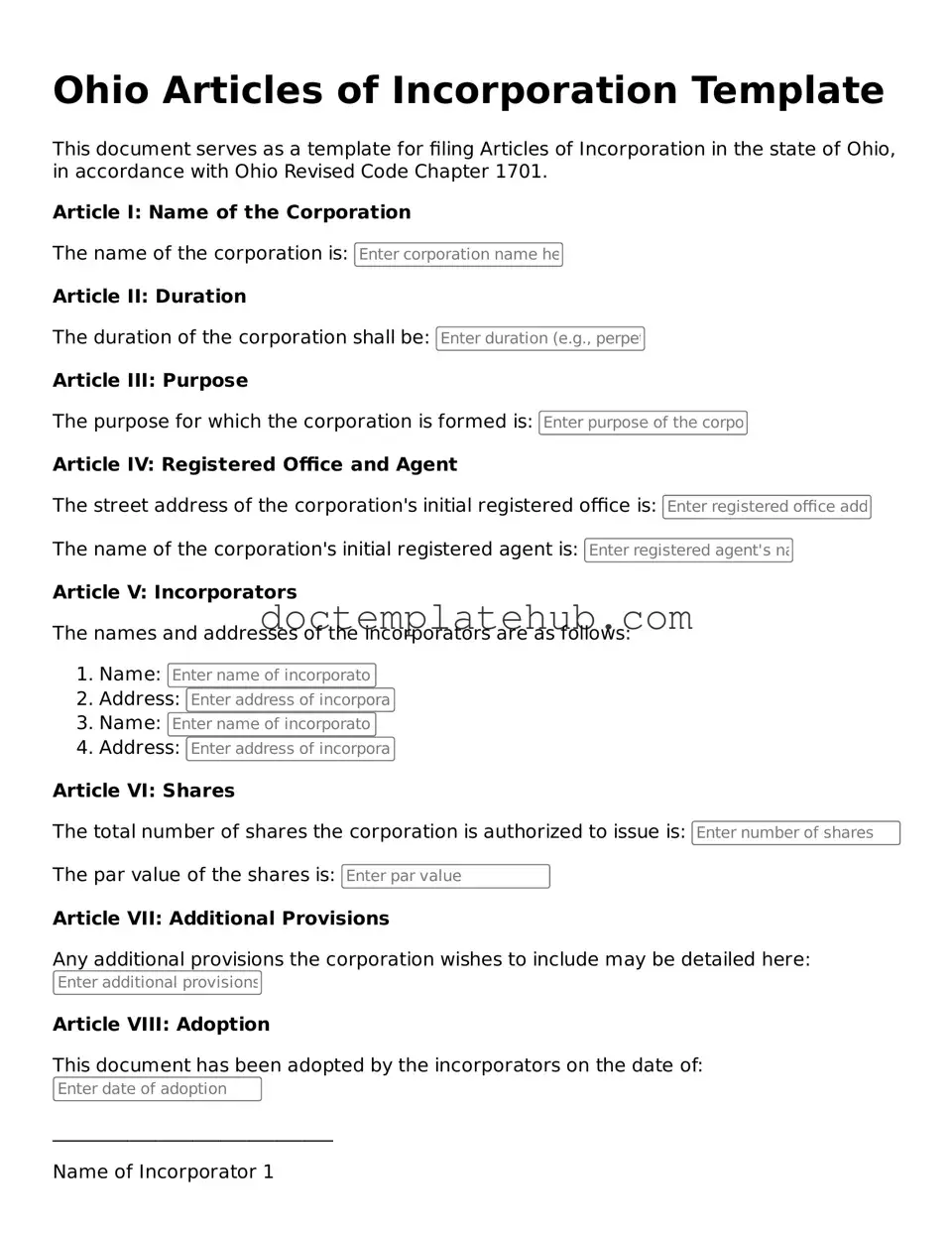What are the Ohio Articles of Incorporation?
The Ohio Articles of Incorporation is a legal document that establishes a corporation in the state of Ohio. It outlines essential information about the corporation, such as its name, purpose, and structure. Filing this document is a crucial step in forming a corporation, as it grants the entity legal recognition and protection under state law.
Who needs to file the Articles of Incorporation?
Any individual or group looking to create a corporation in Ohio must file the Articles of Incorporation. This includes businesses of all sizes, from small startups to large enterprises. Nonprofit organizations also need to file this document to gain legal status.
What information is required in the Articles of Incorporation?
The Articles of Incorporation must include several key pieces of information. This includes the corporation's name, the purpose of the corporation, the address of the principal office, the number of shares the corporation is authorized to issue, and the names and addresses of the initial directors. Additional provisions can also be included if desired.
How do I file the Articles of Incorporation in Ohio?
Filing can be done online or by mail. To file online, visit the Ohio Secretary of State's website and complete the necessary forms. If you prefer to file by mail, you can download the form, fill it out, and send it to the Secretary of State's office with the required filing fee. Ensure that all information is accurate to avoid delays.
What is the filing fee for the Articles of Incorporation?
The filing fee for the Articles of Incorporation in Ohio varies depending on the type of corporation being formed. Typically, the fee ranges from $99 to $125. It's essential to check the current fee schedule on the Ohio Secretary of State's website to ensure you have the correct amount when filing.
How long does it take to process the Articles of Incorporation?
Processing times can vary. Generally, online filings are processed faster, often within a few business days. Mail filings may take longer, sometimes up to several weeks. To expedite the process, ensure that all required information is complete and accurate before submission.
Can I amend the Articles of Incorporation after filing?
Yes, amendments to the Articles of Incorporation can be made after the initial filing. If there are changes to the corporation’s name, purpose, or structure, an amendment form must be filed with the Ohio Secretary of State. There may be a fee associated with this amendment, so it’s important to check the current regulations.
Do I need legal assistance to file the Articles of Incorporation?
While it's not mandatory to have legal assistance, consulting with a legal professional can be beneficial. They can help ensure that all information is accurate and compliant with Ohio laws. This can prevent potential issues down the line, saving time and resources.
What happens after I file the Articles of Incorporation?
Once the Articles of Incorporation are filed and approved, the corporation is officially formed. You will receive a certificate of incorporation from the state. Following this, you must comply with ongoing requirements, such as obtaining any necessary licenses and permits, holding regular meetings, and filing annual reports.
